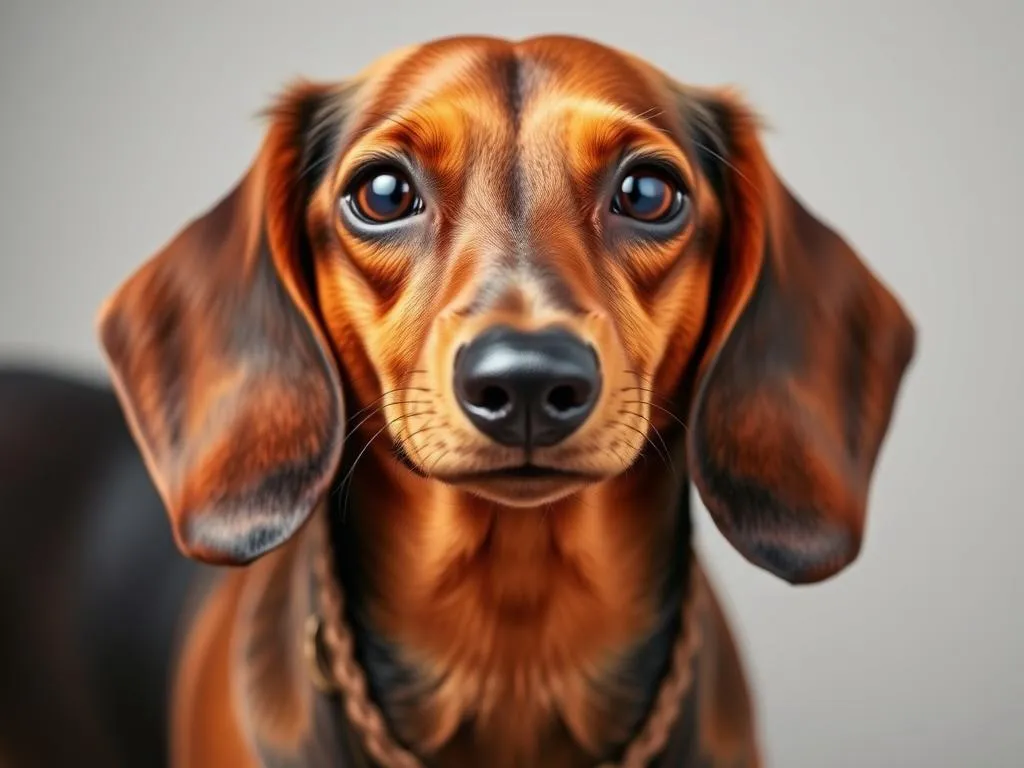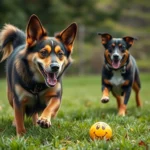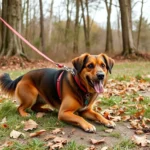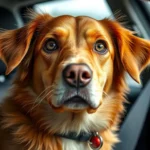
Introduction
Dachshunds, affectionately known as “wiener dogs,” have captured the hearts of many with their unique appearance and charming personalities. Originally bred in Germany for hunting badgers, these small yet spirited dogs come in three distinct coat types: smooth, long-haired, and wire-haired. Each coat type not only defines their look but also influences their grooming needs.
Grooming is an essential aspect of keeping your Dachshund healthy and happy. Regular grooming not only enhances their appearance but also helps prevent skin issues, matting, and other health concerns. This guide aims to provide you with a practical approach to Dachshund grooming, tailored to the unique characteristics of each coat type.
Understanding Dachshund Coat Types
Smooth Coat
Smooth-coated Dachshunds have a sleek, short coat that lies flat against the body. This coat is relatively low-maintenance, requiring less frequent grooming compared to other types.
- Grooming Needs: A gentle brush with a bristle brush once a week is usually sufficient to remove loose hair and dirt.
- Frequency of Grooming Sessions: Weekly brushing, with occasional baths as needed, will keep their coat healthy and shiny.
Long-Haired
The long-haired Dachshund features a soft, flowing coat that requires more attention. These dogs have a feathered appearance, particularly on their ears, legs, and tail.
- Unique Features: Their longer fur can tangle and mat if not groomed regularly.
- Best Practices: Brushing at least twice a week with a slicker brush and a wide-toothed comb helps keep their coat free from tangles and mats.
Wire-Haired
Wire-haired Dachshunds have a dense, coarse coat that gives them a distinctive look. They also have a beard and bushy eyebrows that add to their character.
- Distinctive Qualities: Their coat requires special grooming techniques to maintain its texture.
- Importance of Hand-Stripping: Hand-stripping, rather than clipping, is recommended to maintain the coat’s natural appearance and texture. This should be done every few months, while regular brushing should occur every week.
Essential Grooming Tools
To effectively groom your Dachshund, you’ll need a few essential tools tailored to their coat type.
Brushes and Combs
- Smooth Coat: A bristle brush or grooming mitt is ideal for smoothing the coat.
- Long-Haired: Use a slicker brush followed by a wide-toothed comb to detangle and smooth their fur.
- Wire-Haired: A slicker brush, along with a comb, is perfect for maintaining their texture.
Bathing Supplies
Choosing the right products is vital for your Dachshund’s skin and coat health.
- Best Shampoos and Conditioners: Look for hypoallergenic and dog-specific shampoos to avoid irritating their skin. Brands like Earthbath and PetAg offer great options.
- Tips for Choosing Products: Always check for dog-safe ingredients and consult your vet if unsure.
Nail Care Tools
Keeping your Dachshund’s nails trimmed is essential for their comfort and mobility.
- Types of Nail Clippers: Choose between guillotine-style or electric grinders based on your comfort level.
- Importance of Regular Nail Trimming: Overgrown nails can lead to pain and difficulty walking. Aim for every 3-4 weeks.
Ear and Teeth Cleaning Supplies
Maintaining ear and dental hygiene is crucial for your Dachshund’s overall health.
- Recommended Ear Cleaning Solutions: Use vet-approved ear cleaners to prevent infections.
- Teeth Cleaning: Invest in a dog-specific toothbrush and toothpaste. Regular brushing helps prevent dental problems.
Step-by-Step Grooming Process
Bathing Your Dachshund
Bathing is a key component of grooming, but it’s essential to avoid overdoing it.
- Frequency Based on Coat Type: Smooth-coated Dachshunds can be bathed every few months, while long-haired ones may require monthly baths.
- Step-by-Step Technique:
- Use lukewarm water and wet your Dachshund thoroughly.
- Apply a small amount of shampoo, lather gently, and rinse thoroughly.
- Follow up with a conditioner if needed, ensuring it’s rinsed completely.
Brushing Techniques
Proper brushing techniques can make a significant difference in maintaining your Dachshund’s coat.
- Smooth Coat: Brush in the direction of hair growth to remove loose hairs.
- Long-Haired: Start at the base and work your way to the tips, using a slicker brush followed by a comb to remove tangles.
- Wire-Haired: Brush against the grain to remove dead hairs, then smooth it out with a comb.
Nail Trimming
Regular nail trimming can be daunting but is crucial for your dog’s health.
- How to Trim at Home:
- Hold the paw firmly and press gently to extend the nail.
- Trim just the tip, avoiding the quick (the pink area) to prevent bleeding.
-
Reward your Dachshund with a treat afterward.
-
Signs of Overgrown Nails: If you hear clicking sounds when your dog walks, it’s time for a trim.
Ear Cleaning Routine
Keeping your Dachshund’s ears clean helps prevent infections.
- Inspecting and Cleaning Ears: Check for dirt or wax buildup. Use a cotton ball with ear cleaner to wipe the outer ear gently.
- Signs of Ear Infections: Watch for redness, odor, or excessive scratching. If any of these occur, consult your vet.
Teeth Brushing
Dental hygiene is vital for preventing periodontal disease.
- How to Introduce Tooth Brushing: Start by allowing your Dachshund to lick the toothpaste. Gradually introduce the toothbrush, gently brushing in circular motions.
- Frequency: Aim for brushing at least 2-3 times a week for optimal dental health.
Grooming Frequency and Seasonal Considerations
Regular Grooming Schedule
Each coat type has different grooming frequency needs.
- Smooth Coat: Brush weekly and bathe as needed.
- Long-Haired: Brush 2-3 times a week and bathe monthly.
- Wire-Haired: Brush weekly and strip every few months.
Seasonal Grooming Tips
Grooming needs can change with the seasons.
- Shedding Seasons: Spring and fall often lead to increased shedding. More frequent brushing during these times can help manage loose hair.
- Preparing for Summer and Winter: Ensure your Dachshund is comfortable in extreme weather by adjusting grooming routines. Shorter trims may help in summer, while regular brushing helps prevent matting in winter.
Professional Grooming Services
When to Consider Professional Grooming
Although you can manage much of your Dachshund’s grooming at home, some situations may warrant professional help.
- Benefits of Professional Grooming: Professional groomers can handle complex grooming needs, especially for long-haired and wire-haired Dachshunds.
- Situations Requiring Professional Help: If you’re unsure about nail trimming or if your dog is heavily matted, it’s best to consult a professional.
Finding the Right Groomer
Choosing a reputable groomer can make all the difference.
- Tips for Choosing: Look for groomers with experience in handling Dachshunds. Online reviews and recommendations from fellow dog owners can guide you.
- Questions to Ask: Inquire about their grooming techniques, experience with your dog’s coat type, and sanitation practices.
Common Grooming Challenges and Solutions
Dealing with Matting
Matting can be a concern, especially for long-haired and wire-haired Dachshunds.
- Causes of Matting: Lack of regular brushing and environmental factors can lead to tangled fur.
- Prevention and Removal Techniques: Regular brushing and using detangling sprays can help. For severe matting, consider seeking professional help.
Handling Grooming Anxiety
Some Dachshunds may experience anxiety during grooming sessions.
- Tips for Calming a Nervous Dachshund: Use treats and praise to create a positive association with grooming. Gradual exposure to grooming tools can help.
- Gradual Desensitization Strategies: Start with short grooming sessions, gradually increasing the duration as your dog becomes more comfortable.
Skin Issues and Allergies
Dachshunds can be prone to certain skin problems.
- Common Skin Problems: Allergies, hot spots, and dry skin can occur. Regular grooming can help identify these issues early.
- When to Seek Veterinary Advice: If you notice excessive scratching, redness, or unusual odors, consult your vet for appropriate treatment.
Additional Care Considerations
Diet and Grooming
A healthy diet plays a crucial role in maintaining your Dachshund’s coat quality.
- Role of a Healthy Diet: Ensure your dog receives balanced nutrition with essential fatty acids to support skin and coat health.
Exercise and its Impact on Grooming
Regular exercise is essential for your Dachshund’s overall well-being.
- Importance of Regular Exercise: Physical activity helps maintain a healthy weight and can reduce grooming issues related to skin and coat health.
Socialization and Grooming
Socialization can significantly influence your Dachshund’s grooming behavior.
- Influence of Socialization: Exposure to various environments and experiences can help reduce anxiety during grooming sessions, making the process more enjoyable for both of you.
Conclusion
Grooming your Dachshund is not just about aesthetics; it’s about ensuring their health and well-being. Understanding the specific grooming needs of your dog’s coat type and establishing a regular grooming routine will go a long way in keeping your furry friend happy and healthy.
By incorporating the practices outlined in this Dachshund grooming guide, you can strengthen the bond between you and your pet, making grooming a positive experience. Embrace the grooming journey, and enjoy the time spent with your beloved Dachshund as you keep them looking and feeling their best.









